Coronary artery bypass surgery for coronary artery disease
A coronary artery is narrowed or blocked
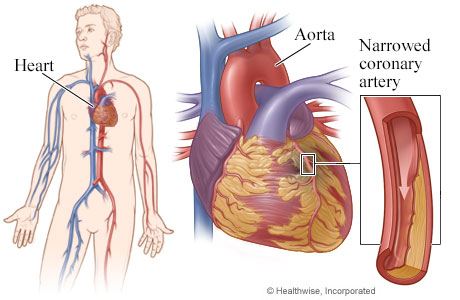
Coronary artery bypass grafting (CABG) surgery reroutes blood around narrowed or blocked arteries, increasing blood flow to the heart muscle tissue.
Incision in the middle of the chest for open-heart surgery
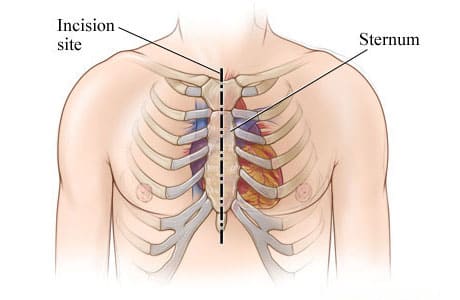
Bypass surgery is most often done as an open-heart surgery. The surgeon makes a vertical incision in the skin and muscle in the middle of the chest and then cuts through the breastbone (sternum).
The heart is exposed
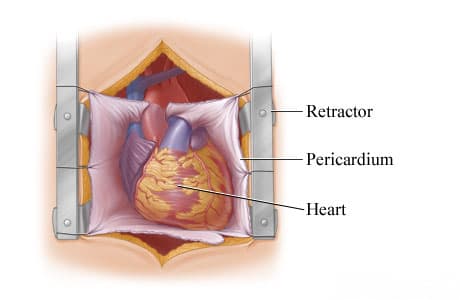
The surgeon spreads the rib cage with a retractor to expose the heart and then cuts through the lining that protects the heart (pericardium).
Blood flow is rerouted
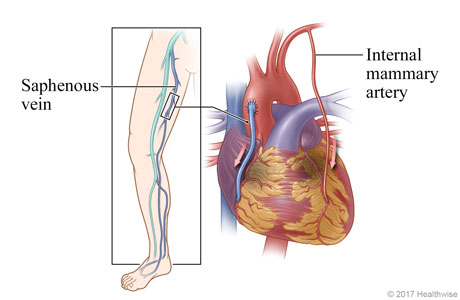
To reroute blood flow around the diseased blood vessel, surgeons use a blood vessel taken from another part of your body. For example, the saphenous vein from the leg or an internal mammary artery from the chest may be used.
Oxygen-rich blood flows to heart muscle
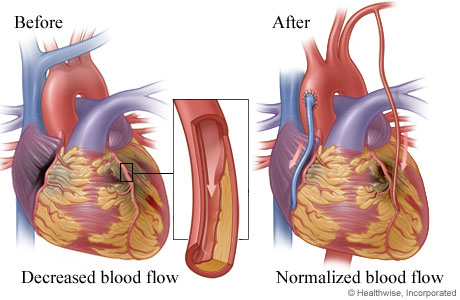
Regardless of which type of blood vessel is used, oxygen-rich blood from the aorta is rerouted around the narrowed or blocked section of the coronary artery to improve blood flow to the heart muscle.
Current as of: October 2, 2025
Author: Ignite Healthwise, LLC Staff
Clinical Review Board
All Ignite Healthwise, LLC education is reviewed by a team that includes physicians, nurses, advanced practitioners, registered dieticians, and other healthcare professionals.

